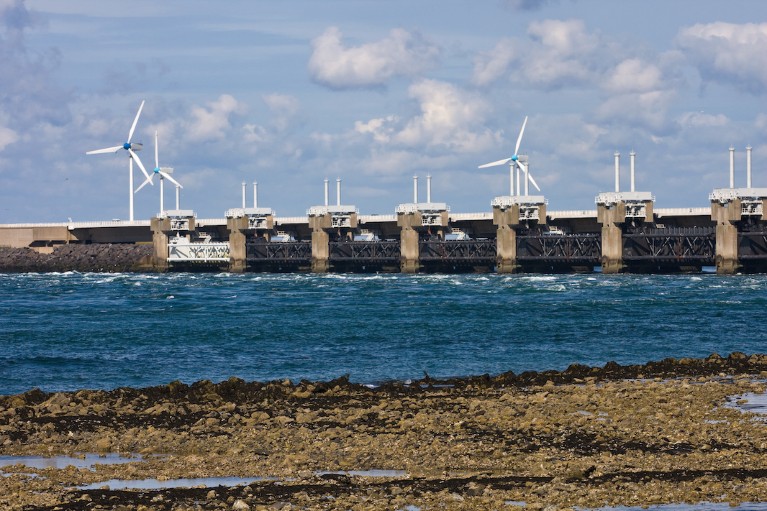Leggi in italiano
The Oosterscheldekering wind farm in the Netherlands. Northern European countries are making substantial investments in wind power. Credit: Anna Dudek Photography/ Moment/ Getty Images.
Wind droughts are attracting more interest as countries turn to wind power to meet energy requirements. “An example is the period of low winds experienced in northwestern Europe during the summer and early autumn of 2021,” says Antonini. This led to a notable decrease in energy production from wind across the continent.
The researchers analysed data from 1979 to 2022 in various regions, and used them to estimate the amount of battery storage that would be needed in each of those regions to overcome wind droughts and ensure a constant supply of energy. This metric considers both the depth and duration of wind droughts.
This analysis helps identify areas where investments could yield the most reliable returns in terms of energy production, as well as areas where diversification of the energy portfolio may be necessary to mitigate risks associated with wind variability.
The study has identified geographical regions with the most favorable conditions for wind energy generation. These include the American Midwest, some parts of Australia, the Sahara, Argentina, Uruguay, central Asia, and southern Africa. On the other hand, northwestern Europe, that has made substantial investments in wind power, faces challenges due to high levels of seasonal and weather variability. For example, the countries around the North Sea aim to install significant offshore wind capacity by 2050, but these investments may be at risk of lower reliability due to the region's vulnerability to wind droughts.
“Addressing the issue of wind droughts through planning, innovation, and policy will be crucial for ensuring the reliability and resilience of wind power,” Antonini concludes.
